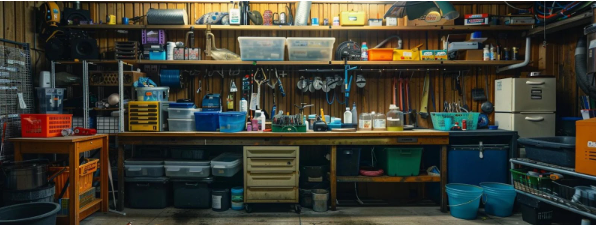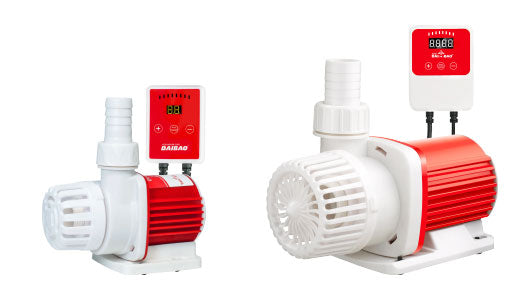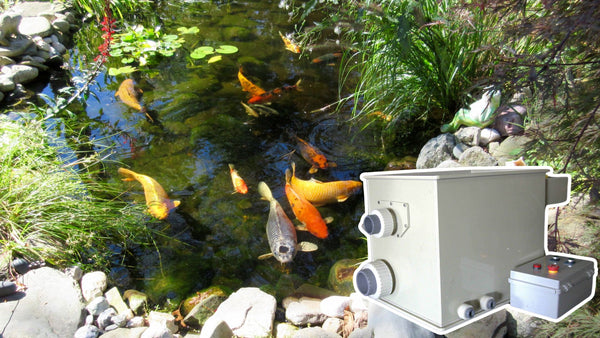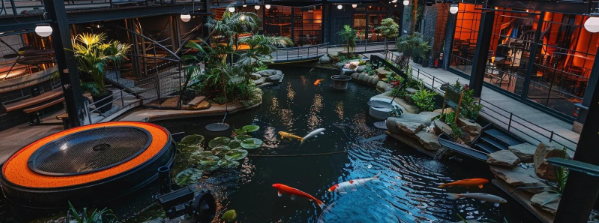
Table Of Contents:
- Koi Pond Filtration
- Key Takeaways
- The Purpose of Koi Pond Filtration Systems
- Key Components in Koi Pond Filtration
- Selecting the Ideal Koi Pond Filtration Configuration
- Installing Your Koi Pond Filtration Equipment
- Maintaining Your Koi Pond Filtration for Sustained Performance
- Advanced Koi Pond Filtration Methods and System Upgrades
- Final Thoughts
- Frequently Asked Questions
Koi Pond Filtration
In maintaining a thriving koi pond, filtration systems such as the Koi Pond Drum Filtration System and the 30 Ton Macro Drum Pond Filter with Filter Media are essential for clear water and healthy fish. Efficient filtration reduces toxins, debris, and algae buildup while promoting a balanced aquatic ecosystem. For more detailed insights, one may refer to a Koi Pond Filtration Video Guidethat explains the functionality of these systems. This article covers the purpose, components, configuration, installation, maintenance, and advanced upgrades of koi pond filtration systems.
Key Takeaways
- Filtration systems maintain water quality and protect fish health.
- They combine mechanical, biological, and UV modules for effective waste removal.
- Proper installation and maintenance lead to long-lasting performance and lower costs.
- Upgraded systems enhance water clarity and reduce algae and ammonia levels.
The Purpose of Koi Pond Filtration Systems

Koi pond filtration systems sustain the water quality necessary for koi survival by filtering waste, reducing ammonia and nitrite, and preventing algae blooms. By managing dissolved organic compounds and bacteria, these systems create a balanced aquatic environment that enhances fish coloration and minimizes stress. A clear pond not only looks appealing but also supports effective nitrification and toxin conversion, ensuring a healthy habitat for koi.
Maintaining Optimal Water Quality for Healthy Koi
A well-designed filtration system removes contaminants through mechanical filters that capture large particles and biological filters that cultivate bacteria to digest harmful ammonia. Regular monitoring of pH, hardness, and clarity helps maintain stable water conditions that promote robust koi behavior and longevity.
How Filtration Manages Koi Waste and Debris
Filtration captures solid waste such as leaves, scales, and organic matter before they break down into toxins. With continuous removal of debris via mechanical and biological filters, the risk of stagnation and bacterial overgrowth is minimized, keeping the water clean and the ecosystem dynamic.
Preventing Algae and Green Water With Effective Filtration
By continuously removing excess nutrients and particulates, effective filtration prevents algae overgrowth and green water. The use of UV clarifiers complements mechanical and biological stages, significantly reducing algae blooms and ensuring oxygen is available for aquatic life.
The Link Between Koi Pond Water Clarity and Fish Well-Being
Clear water is a sign of a balanced ecosystem with low toxin levels, which means healthier koi that are less prone to disease. Improved clarity also allows better light penetration for aquatic plants, further enhancing the pond environment.
Understanding Ammonia and Nitrite Removal in Koi Ponds
Biological filters harbor nitrifying bacteria that convert toxic ammonia into nitrite and then into less harmful nitrate. Regular checks ensure that bacteria remain balanced, keeping ammonia and nitrite at safe levels and reducing fish stress.
Key Components in Koi Pond Filtration
A koi pond filtration system comprises various components that work together for effective waste management. Each plays a critical role, from initial solids removal to advanced biological treatment and pathogen control.
Mechanical Filters: The First Stage of Solids Removal
Mechanical filters trap particles and debris as water enters the system. Using screens or sponge modules, they protect downstream components from overload. Regular cleaning is crucial to maintain their efficiency and prevent clogging.
Biological Filters: Cultivating Beneficial Bacteria for Toxin Conversion
Biological filters form the core of water purification by providing surfaces—through bio-balls, ceramic rings, or specialized media—for beneficial bacteria to grow. These bacteria convert toxic ammonia into nitrate, stabilizing water chemistry. Routine maintenance and occasional filter media replacement help preserve their efficacy.
UV Clarifiers and Sterilizers: Combating Algae and Pathogens
UV units emit ultraviolet light that disrupts the DNA of harmful algae and pathogens, preventing reproduction and disease spread. Integrated with other filtration stages, these clarifiers help maintain clear, healthy water without chemical treatments.
The Role of Bottom Drains and Skimmers in Water Purification
Bottom drains and skimmers work together to remove sediment from the pond floor and litter from the surface. Proper placement of these devices ensures smoother water circulation and reduces the frequency of manual cleaning by minimizing debris accumulation.
Water Pumps: Powering Your Koi Pond's Filtration Cycle
Water pumps circulate the entire pond volume through the filtration system multiple times a day. Correct pump sizing and flow rates are critical to provide every component with adequate water flow. Routine checks on the pump’s performance help guarantee long-term efficiency.
Selecting the Ideal Koi Pond Filtration Configuration
Choosing the best filtration configuration depends on pond volume, fish load, and water turnover needs. Experimenting with various designs helps identify which system balances performance with ease of maintenance.
Calculating Filter Size Based on Pond Volume and Koi Load
An effective rule is to circulate the entire pond volume through the filter three to four times per hour. Filter capacity must consider pond dimensions and the number of koi, as higher fish loads generate more waste, necessitating a larger system.
Comparing Different Types of Koi Pond Filter Media
Different filter media, from sponges to ceramic rings and bead filters, offer varied benefits. Each material’s surface area, durability, and cost-effectiveness should be evaluated to support beneficial bacteria and ease of maintenance.
Evaluating Pre-Assembled Versus Custom DIY Koi Filtration Systems
Pre-assembled systems offer convenience and professional design, ideal for beginners. Custom DIY options provide flexibility for advanced users who wish to tailor every aspect of the filtration process to specific pond needs.
Pump-Fed Versus Gravity-Fed Koi Pond Filtration Designs
Pump-fed systems, with precise water flow control, are preferred for larger ponds, while gravity-fed systems offer quieter, energy-efficient operations but require careful leveling. The choice depends on pond size and desired performance.
Factoring in Energy Efficiency and Long-Term Costs
It is important to weigh initial costs against energy efficiency, maintenance requirements, and component longevity. Investing in quality, energy-efficient equipment can lead to lower running costs and fewer replacement needs over time.
Installing Your Koi Pond Filtration Equipment
Proper installation is critical to system performance. Components must be strategically placed and securely connected to ensure optimal water flow and minimize potential issues.
Strategic Placement of Filters and Pumps for Maximum Effect
Filters should capture the majority of incoming water, and pumps must be located to distribute flow evenly. Placing devices near bottom drains and skimmers reduces dead zones and improves overall efficiency.
Connecting Pipework, Drains, and Filter Units Securely
All pipe connections must be leak-proof and routed to minimize friction and clogging. Secure fittings and proper alignment ensure an uninterrupted filtration cycle and long-lasting installation.
Initial System Startup and Cycling Your Biological Filter
After installation, the system should run continuously until the biological filter is fully cycled—a process that may take several weeks. Monitoring water parameters during this period ensures that ammonia and nitrite levels are declining to safe levels.
Common Pitfalls to Avoid During Koi Filter Installation
Avoid common issues such as improper leveling, inadequate sealing, and overestimating pump capacity. Double-checking each step and following manufacturer guidelines can prevent costly errors and ensure smooth operation.
Testing Water Flow and System Performance Post-Installation
After setup, test the water flow and inspect all connections under operating conditions. Early detection of low flow or blockages allows for prompt corrections before the system is fully operational.
Maintaining Your Koi Pond Filtration for Sustained Performance

Regular maintenance is key to a long-lasting filtration system. Scheduled cleanings and periodic component upgrades protect the system’s performance and ensure consistently high water quality.
Creating a Regular Cleaning Schedule for Koi Pond Filters
Mechanical filters should be cleaned weekly, while biological filters require monthly checks. Seasonal adjustments may be needed based on debris levels to prevent overloading and maintain proper circulation.
Proper Cleaning Techniques for Mechanical Filter Components
Gently rinse mechanical filters with pond water or non-toxic solutions, employing a soft brush to remove trapped particles without harming beneficial bacteria.
Nurturing and Protecting Beneficial Bacteria in Biological Media
Avoid harsh chemicals when cleaning biological media. A light rinse is sufficient to preserve bacterial colonies that convert toxins, maintaining safe ammonia and nitrite levels.
Replacing UV Bulbs, Quartz Sleeves, and Other Consumables
Monitor and replace UV bulbs and quartz sleeves as recommended (often annually) to sustain the sterilizing effect needed for clear water and pathogen control.
Monitoring Water Parameters to Gauge Filtration Effectiveness
Regularly check pH, ammonia, nitrite, nitrate, and clarity levels. Continuous monitoring detects imbalances early and enables adjustments before koi health is affected.
Advanced Koi Pond Filtration Methods and System Upgrades
Beyond standard filtration, advanced methods can further enhance water quality. These upgrades integrate technology with natural processes for improved maintenance and efficiency.
Implementing Bakki Showers or Trickle Towers for Enhanced Biofiltration
Bakki showers and trickle towers distribute water evenly over extensive media surfaces, boosting oxygenation and bacterial colonization. This design improves nitrification and overall toxin conversion.
Utilizing Rotating Drum Filters (RDFs) for Automated Solids Management
RDFs continuously separate solids from water with minimal manual intervention through a self-cleaning mechanism that reduces maintenance time while ensuring cleaner water.
Incorporating Moving Bed Biofilm Reactors (MBBRs) With Media Like K1
MBBRs use floating carriers to provide additional surface area for beneficial bacteria, enhancing the removal of organic waste and supporting stable water chemistry.
Exploring Bead Filters for Combined Mechanical and Biological Action
Bead filters combine solids trapping with bacterial support in a single unit, reducing system complexity while improving water clarity and overall efficiency.
Integrating Planted Filters or Bog Systems for Natural Water Polishing
Planted filters or bog systems use aquatic plants to absorb dissolved nutrients and provide natural aeration, polishing the water and creating an integrated ecosystem that benefits fish, microbes, and plants alike.
Final Thoughts
A well-designed koi pond filtration system forms the backbone of a healthy aquatic ecosystem. By selecting the right components, installing them correctly, and maintaining the system through regular cleaning and upgrades, pond owners can enjoy vibrant, clear water and healthy koi. Embracing advanced methods further reduces maintenance and elevates water quality, ensuring long-term success.
Frequently Asked Questions
Q: How often should I clean my mechanical filters? A: Clean mechanical filters weekly to prevent clogging and maintain optimal water flow.
Q: What are the signs of an improperly cycled biological filter? A: Look for elevated ammonia or nitrite levels, cloudy water, and stressed fish.
Q: Can I upgrade my existing filtration system with advanced components? A: Yes, adding UV clarifiers, RDFs, or MBBRs can significantly enhance performance and lower maintenance needs.
Q: How do I choose between pump-fed and gravity-fed systems? A: The choice depends on your pond size, budget, and flow rate requirements; pump-fed systems offer precise control, while gravity-fed systems are more energy efficient.
Q: What is the importance of regular water parameter monitoring? A: Regular monitoring identifies imbalances early, allowing for proactive maintenance to keep your koi healthy.



 Aquariums & Supplies
Aquariums & Supplies


 Coral Reef Aquariums & Supplies
Coral Reef Aquariums & Supplies


 Garden & Hydroponics & Landscape
Garden & Hydroponics & Landscape


 Ponds & Fountains & Waterfalls
Ponds & Fountains & Waterfalls


 Drum Pond Filter
Drum Pond Filter



 Community
Community



 Help Center
Help Center







